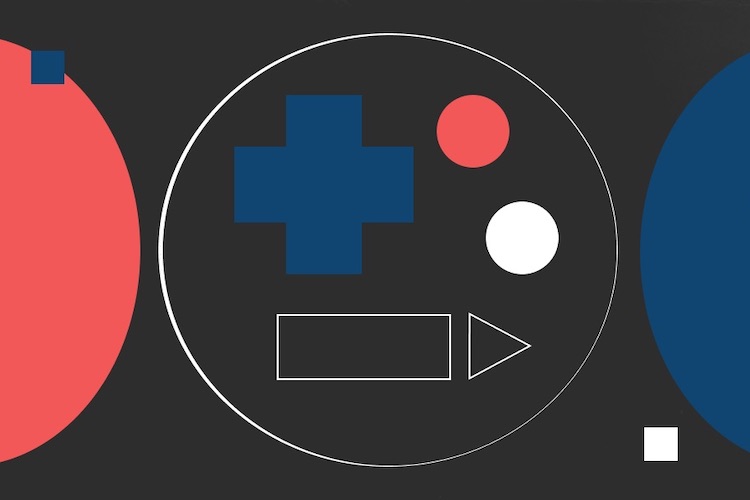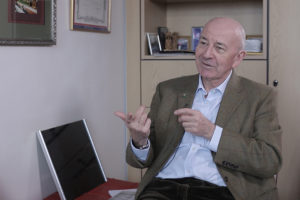Philosophy of Economics
Philosopher Daniel Hausman on rationality, John Stuart Mill, and austerity

Game theory is a mathematical theory of strategy that assumes that there are at least two players whose choices determine an outcome. Insofar as the players have conflicting preferences, their conflict may not be total — it is not necessarily the case that when one player wins, the other loses (as in most sports). Their conflict may only be partial, wherein both players can win or lose simultaneously. The game theory focuses on players’ strategies that are in equilibrium, i.e., stable.
Game theory was largely invented by John von Neumann, a Hungarian mathematician who came to the United States in the late 1930s, and Oskar Morgenstern, a German economist, who came about that time. They met at the Institute for Advanced Study at Princeton University around 1940 and wrote the book Theory of Games and Economic Behavior (1944). The book was revised in 1947 and 1953.

John von Neumann had earlier written an article (in 1928) proving the so-called minimax theorem, which is sometimes considered the fundamental theorem of game theory. At Princeton, he collaborated with Morgenstern on applying game theory to economics as well as to parlor games, like poker, that people play.
In their book, the authors model a simplified form of poker and analyze the optimal strategies that players choose. Their book is mathematically challenging, and it was not well-understood at the time. But over the years, many people have found the ideas very fruitful, particularly in economics, biology, and, more recently, political science. Furthermore, game theory has been applied to sports and a variety of disciplines, such as philosophy. Game theory gives a structure to thinking about both conflict and cooperation when there are two or more players.
There have been several major contributors to the development of game theory, including John Nash, who is famous for the Nash equilibrium, and a number of mathematicians and economists who received the Nobel Prize in economics for their contributions.

A game is a situation in which there is interdependence between the participants or players. If there are two players, what I do depends on what you do, and what you do depends on what I do, so the outcome depends on both of our choices. But there may be more than two players, which is likely to lead to the formation of coalitions.
People choose strategies on the basis of the outcomes they yield. If you choose a strategy that you think is good for you, and I choose a strategy that I think is good for me, neither of us can do better by departing from these strategies. It is called an equilibrium outcome.
John Nash made this distinction between the two different approaches to game theory in his early articles around 1950. He was a fundamental contributor to the development of the theory. In the last half-century, it is the noncooperative game theory that has been most fully developed, with the search for optimal, stable strategies that lead to equilibrium outcomes. But the cooperative game theory is also of interest, particularly to philosophers who are concerned with justice and the fairness of outcomes.
A Nash equilibrium is defined as an outcome such that if there are two players, neither player would wish to depart from it because he or she would feel worse by doing so. But it is not necessarily a good outcome for the players. There is a famous game called Prisoner’s Dilemma, in which, when both players choose their optimal strategies, the resulting outcome is quite poor. There is a better outcome for both players, but it is not stable, so it is not a Nash equilibrium. Therefore, there is a conflict between choosing optimal strategies and obtaining a good outcome.
The story told about Prisoners’ Dilemma is the following: Two prisoners are held in separate cells; each is asked whether he is guilty or not guilty of a particular crime. If they both admit they are guilty, they receive a reasonably harsh prison sentence—say, five years in prison. But if they both refuse to admit that they are guilty, they both do quite well, receiving only a one-year prison sentence. But if one confesses and the other does not, then that is very bad for the one who confesses (e.g., ten years in prison), because now he is found guilty, while the other one goes free (e.g., no prison), for helping to convict the other player.
Both prisoners do quite well (the cooperative outcome: one year in prison) if neither confesses. But there is a temptation to try to betray the other prisoner—by confessing when the other doesn’t—to escape prison when the other gets ten. But if both players confess, they do quite badly (the noncooperative outcome: five years in prison). This is called a dilemma because it is not clear what the players should do: Should they choose their noncooperative strategies and confess, or should each take a chance and not confess, risking even a longer sentence if the other prisoner confesses?
It seems like they should cooperate, but it is not a stable outcome because each has an incentive not to cooperate but to betray the other prisoner. A good example of such a dilemma would be the arms race between the Soviet Union and the United States before 1990. For 45 years, both countries were at a noncooperative outcome, spending a lot of money on arms to deter the other side. Both countries would have been much better off not spending this money on arms but spending it on socially useful things. But each did not trust the other side, so both sides continued to spend on arms, which was painful for both countries.

We know that negotiations are often difficult. What we look for are ways of helping both sides achieve cooperative outcomes even though they may be in a game like Prisoners’ Dilemma. One way is to try to identify the issues which divide the players and use a fair-division procedure to determine who wins on what issues—presumably, the issues each cares most about. You do not get everything you want, but you often can do quite well, especially if you and your adversary care about different issues. In other words, both sides can win, relatively speaking, which is why we call it a win-win solution.
A win-win procedure can be applied to different real-life examples. For example, Alan Taylor and I discuss in our book “The Win-Win Solution: Guaranteeing Fair Shares to Everybody” Donald Trump’s divorce from his first wife, Ivana, showing how each spouse could benefit from reaching an agreement that gives each the things he or she most wants.
It is a dispute-resolution procedure, providing a better way of settling disputes. We often find that disputes end up in conflict, and are not settled, because each side tries to hold out longer, so they never reach an agreement. And divorce can be very costly, not just in terms of financial costs and money the parties pay the lawyers, but in terms of emotional costs. This is a taxing situation that can benefit from game theory.
It is logical to use this kind of procedure, but many people do not know about it. They fight with each other when there might be a compromise that both find satisfactory. They worry that if they do not fight, they will be suckers; they will do badly because the other person is acting badly, and, therefore, they feel they have to act badly to create a balance. But we know that there are situations in which both can make compromises and do better in the end. Emotions also play a big role when each side gets angry, which interferes with thinking logically about the solutions.
We intuitively use game theory all the time. For example, when a person has a problem with a boyfriend, girlfriend, or spouse, he or she thinks about better and worse strategies to win the dispute. Although nobody makes all the calculations that a game theorist does, people intuit them, but they often make mistakes. Game theory can help them think more clearly by taking into account an adversary’s preferences as well as their own.
Conflicts between the United States and Russia, the United States and China, and China and Russia are all too common. They have disputes about many different issues, including territory, trade, and alliances. Game theory can help them reach compromises, which would be difficult to attain by just informal negotiations.
Voting theory, which is also called social choice theory, can be helpful in understanding better ways of electing leaders. In democracies, candidates frequently win without receiving a majority of the votes cast. For example, in the 2016 presidential election in the United States, neither of the two major-party candidates, Hillary Clinton and Donald Trump, won a majority because there were third and fourth-party candidates who received some votes. But there are voting procedures in which people can better express themselves by not necessarily being limited to casting one vote. For example, approval voting allows voters to approve of more than one candidate if there are more than two candidates in a race.
One does not have to be a game theorist to apply some of its principles. For example, Henry Kissinger, who was Secretary of State in the Nixon administration, was never trained as a game theorist. He was a political scientist, but he thought like a game theorist. However, an understanding of game theory can be helpful in carefully analyzing situations in which the outcomes depend on the choices—and their interaction—of more than one person.
New questions arise all the time in fields like economics, politics, and biology that game theory can help to illuminate. But often, extensions of the standard theory are needed. For example, in biology, a new notion of equilibrium called an evolutionarily stable strategy was proposed in the 1970s that seemed more appropriate than that of a Nash equilibrium for analyzing conflicts among species. Game theory is nourished by thinking about real problems and trying out new solutions. Its foundations are in mathematics, but it is new ideas that come out of new applications that will continue to fuel its growth and vitality.
Edited by Liana Khapaeva

Philosopher Daniel Hausman on rationality, John Stuart Mill, and austerity

Computer scientist Erol Gelenbe on the communication of neurons, mathematical properties of the random neural ...

Neuroscientist Samuel McClure on why we violate our best intentions, ‘dual selves model’, and pathways in our ...